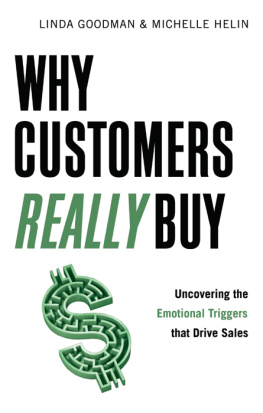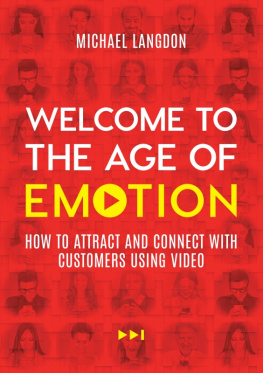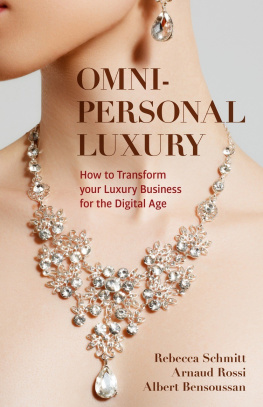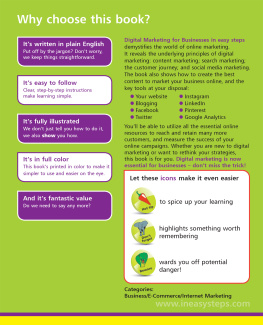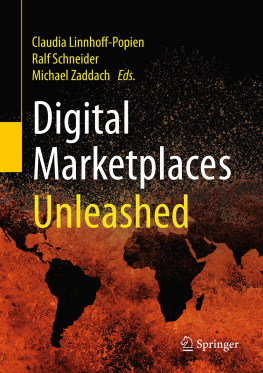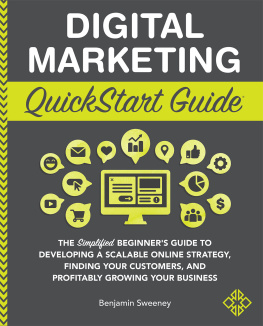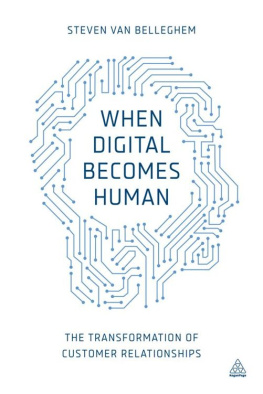
Terms like digital, user-centric and design thinking are as ubiquitous as they are misunderstood. They are used frequently in the business and innovation spheres, with little thought to what the practices actually entail or how to achieve the outcomes for clients and customers that they promise. This book provides excellent examples and case studies demonstrating what works, and the way to apply this to your future endeavours. It goes back to basics so that practitioners have an easily digestible guide to truly enacting the age-old adage, putting the customer first.
Jade Demnar, Change Management Consultant, Accenture
The explosion of digital channels and the proliferation of customer data points has created opportunity and challenge in equal measure for many marketers and business leaders. The holy trinity of relevance (what, why, when) has been exponentially complicated by the addition of many hows (channels) and the need for hyper-personalisation at scale. In all of this complexity the primary goal of the marketer often gets left behind. This book provides an excellent reminder that engagement without emotional response is pointless; that as marketers and business leaders we need to constantly remind ourselves that its our customers emotions that drive response triggers that result in revenue, affinity, loyalty and amplification. In this increasingly complex world this book illustrates perfectly that we must not tempted by shiny objects and channel trends and stay focused on designing engagement programmes with the customer at the centre.
Lee Hawksley, Senior Vice President, APAC, Salesforce.com
For companies seeking a winning strategy in the digital age, Wrigley and Straker lay out a masterful plan and business case to move beyond customer design to a responsive experience that understands and adapts to customer emotion to create a meaningful connection with brands.
Trent Lund, Head of lnnovation and Ventures, PwC
Wrigley and Straker provide a compelling framing of customers ever-growing demands and complexities provoked through the rise of technology and the compounded impact for businesses needing to re-imagine their products, services and business models to remain relevant. Affected beautifully balances theory, application and case studies to demonstrate a new approach to business innovation.
Sophie Tobin, Strategic Design Director, BCG Digital Ventures
affected
emotionally engaging customers in the digital age
CARA WRIGLEY & KARLA STRAKER
First published in 2018 by John Wiley & Sons Australia, Ltd
42 McDougall St, Milton Qld 4064
Office also in Melbourne
John Wiley & Sons Australia, Ltd 2018
The moral rights of the authors have been asserted

All rights reserved. Except as permitted under the Australian Copyright Act 1968 (for example, a fair dealing for the purposes of study, research, criticism or review), no part of this book may be reproduced, stored in a retrieval system, communicated or transmitted in any form or by any means without prior written permission. All inquiries should be made to the publisher at the address above.
Cover design by Wrigley & Straker
Cover image Cj Hendry
Illustrations: Dr Erez Nusem
Disclaimer
The material in this publication is of the nature of general comment only, and does not represent professional advice. It is not intended to provide specific guidance for particular circumstances and it should not be relied on as the basis for any decision to take action or not take action on any matter which it covers. Readers should obtain professional advice where appropriate, before making any such decision. To the maximum extent permitted by law, the authors and publisher disclaim all responsibility and liability to any person, arising directly or indirectly from any person taking or not taking action based on the information in this publication.
Foreword
Back in 2005 when I was Head of Marketing Research and Strategy at Philips, we worked on developing products that made sense to people. That is how the Philips slogan Sense and Simplicity came about. Now the slogan is Innovation and You. Innovation is geared towards addressing the emotional needs of users and buyers of products and services. This book presents an innovative and well-researched approach to designing emotional channel engagements and provides a practical path from design innovation wow to design innovation how.
The authors make the point that most companies do not know how to select the right types of channels to reach their audiences. They do not operate well strategically. More particularly, most companies do not really understand at a deeper level the motivations of the users and buyers of their products and are therefore incapable of creating meaningful engagements and loyalty in the new landscape. The authors propose the Digital Affect Framework and offer a typology of digital channels to better equip companies to emotionally engage their customers.
It is often difficult to write a book about such a fast-moving subject. However, Wrigley and Straker provide a practical new approach to design innovation. Their Digital Affect Framework enables customers latent needs to be addressed through the use of design thinking. All managers who run firms, as well as those responsible for strategic communications that want to compete on value rather than marketing, should familiarise themselves with this approach. This book sets out to accelerate this effort through the Digital Affect Framework, detailed case studies and the key lessons learnt from them, providing and encouraging collaboration for this growing field in design.
Professor Cees de Bont
Dean of the School of Design
The Hong Kong Polytechnic University
About the authors
Associate Professor Cara Wrigley and Dr Karla Straker both reside in the Design Lab an interdisciplinary research group within the School of Architecture, Design and Planning at The University of Sydney, Australia. They are traditionally trained industrial designers who actively research the value of design in business specifically through business model strategies that lead to emotive customer engagements.
Prior to their current appointment they spanned faculty appointments in Design, Business, Engineering and Information Technology emerging in a newly formed discipline, the nexus of design and innovation. Building on solid practical industry experience and combining this with scholarly understanding of emotional design, they have developed a unique insight into innovation in both industry and academia. Through copious industry projects, their work has crossed many disciplinary boundaries and appears in a wide range of high-quality research publications.
Preface
This book was built on friendship a friendship that started more than a decade ago in a classroom. From our beginnings as the keen, green lecturer and the dedicated student, we have worked together ever since today as colleagues. Nicknaming ourselves Team Foxtail, we were at times forced to downplay our hybrid research to not upset the product-centric discipline in which we once resided.
The nickname comes from British philosopher Isaiah Berlins parable of the Hedgehog and the Fox. Inspired by Greek poet Archilochuss statement that the Fox knows many things, but the Hedgehog knows one big thing. Berlin stated that people fall into two categories: Hedgehogs, who view the world through a single defining idea, and Foxes, who draw upon wide experiences, and for whom the world is not black and white. The strength of the Hedgehog is his focus on a singular, central vision; the strength of the Fox is his flexibility and openness to complexity. The Hedgehog never wavers or doubts; the Fox is more cautious and more pragmatic.
Next page


